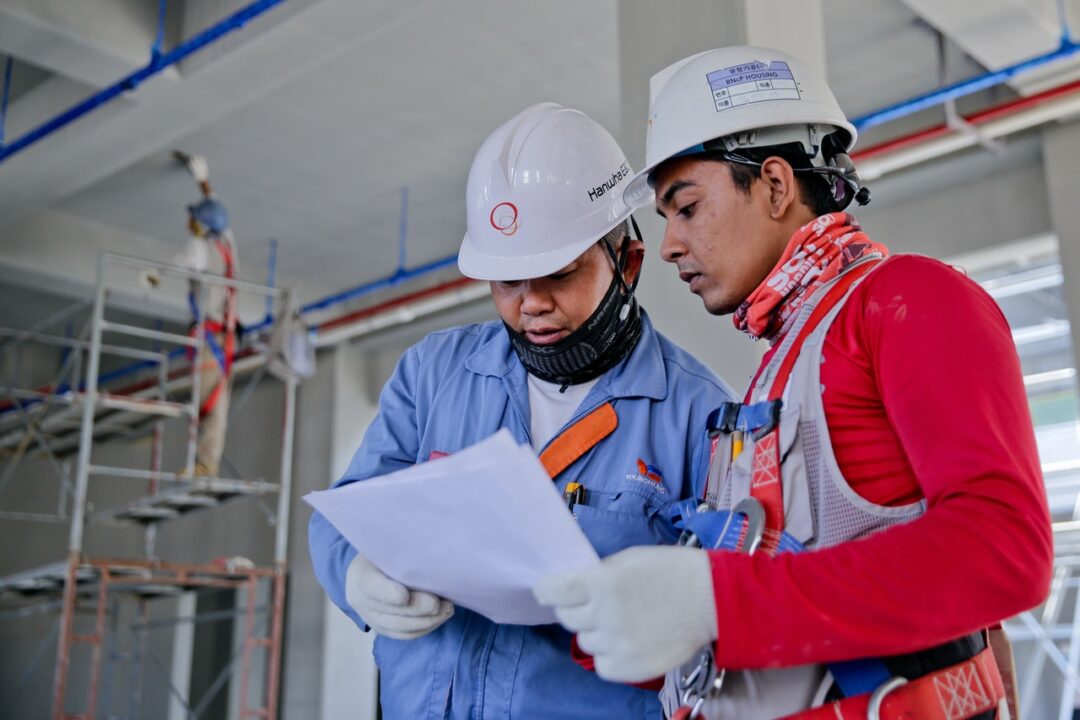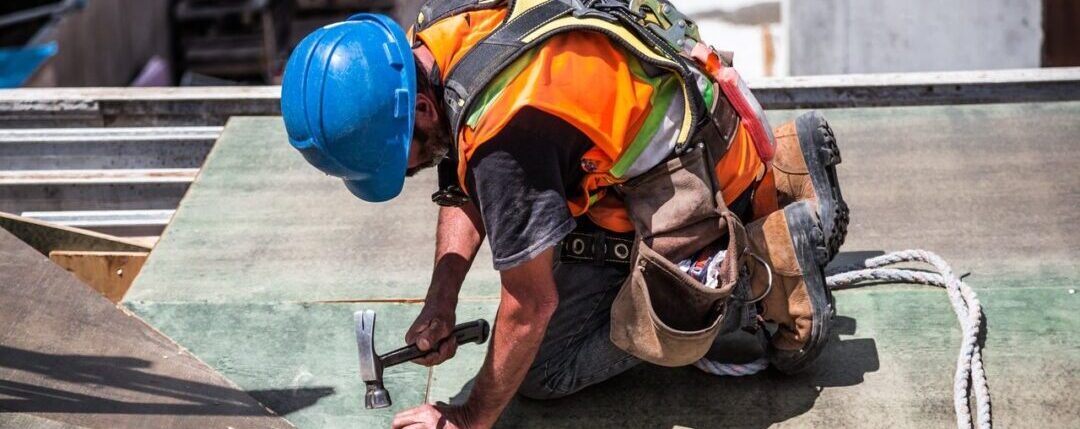Construction workplace accidents
What do we mean by construction accidents? Well, construction includes three broad industry groups.
- Construction of buildings
- This includes new work, making repairs and completing additions and alterations.
- Civil engineering
- Road and railway work and utility projects come under this description.
- Specialised construction
- For example: demolition, electrical, plumbing, joinery, plastering, painting and glazing.
It stands to reason then that there are countless ways someone working in the construction industry can injure themselves.
The 10 most frequent construction accidents
1. Falling from a height
It may come as no surprise given that construction work often involves working on scaffolding, rooftops and on ladders that the major danger is falling. Statistics from the Health and Safety Executive (HSE) show almost half of all construction accidents (47%) were from falls from height and they record 40 fatal injuries for 2019/20, which was slightly up on the 5-year average of 37 per year.

2. Falling objects
There’s a reason why hard hats are required on a building site. All kinds of things are passed overhead during the construction of a building, including bricks, buckets and tools and it isn’t uncommon for workers to be hit by them. While some injuries can be thankfully minor, others can cause brain injury or even be be fatal
3. Being trapped by something
Around 16 per cent of workers were injured after becoming trapped according to HSE statistics. This may have been from falling debris, or from being crushed between an object and a wall and could result in injuries such as broken ribs or limbs, or cutting off a worker’s oxygen intake.
4. Struck by a moving vehicle
Building sites are busy places and a worker could be hit anytime by a careless driver, however the most common scenario for this is on highway construction sites, when speeding or distracted drivers hit workers with their vehicles. The risks of a moving vehicle striking a worker is the main reason for Hi-Vis clothing being compulsory on construction sites.
5. Contact with electricity
The HSE statistics show four per cent of accidents occurred through contact with electricity. If you think of all those exposed wires and incomplete electrical work that exists on a site then it’s easy to see how electrocution can happen.
6. Slips, trips or falls
As well as falls from height, construction workers are prey to all manner of things that can cause them to trip or slip. Construction sites are full of materials, tools, and debris lying around and which are easily a hazard, or spillages that can cause the ground to be slippery.
7. Machinery accidents
Large and or dangerous machinery is all part of the construction worker’s day-to-day and tools such as jackhammers, cranes, bulldozers, or even smaller power tools like nail guns and drills, may cause serious injury. Tools should be regularly tested and maintained and if they become defective and it is the owner’s responsibility to oversee the maintenance and carry out the repairs.
Vibration from power tools can also prove to have serious effects on health. It can be the cause of nerve and tendon damage to the hands, arms and wrists which can be extremely uncomfortable, painful or even lead to amputation or paralysis.
8. Explosions or burns
Exposed wires and gas leaks can be the cause of fires and explosions and pose a serious threat to workers. There are also many dangers of high heat and sparks on construction sites. Equipment, such as those used in welding, cutting, and grinding, can create sparks when being used.
9. Ground collapses
Excavating land isn’t without it’s dangers as this could suddenly implode and collapse on workers who are in the vicinity, again causing broken limbs and other life-threatening injuries.
10. Manual handling
Construction involves regularly lifting and carrying heavy loads such as bricks and machinery and if this is done incorrectly it can result in severe injuries such as Musculoskeletal Disorder (MSDS) which is a common condition amongst construction workers. It can often cause pain in the back or limb joints as well as muscles and tissues with the risk of permanent disability.
Manual handling can also result in overexertion. Often building crews have to work long hours in extreme conditions and injury can occur as a result of dehydration, fainting, or even strokes.
If you work in the construction industry and need the help of an experienced solicitor we at Wafer Phillips solicitors are here to advise. Please visit our contact us page for more information.



